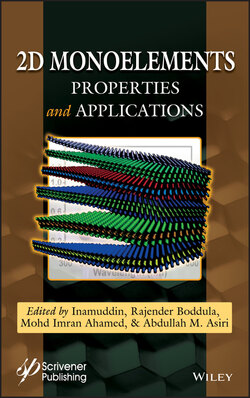Читать книгу 2D Monoelements - Группа авторов - Страница 51
2.4.2 Optoelectronic Device
ОглавлениеFor optoelectronic applications, materials are usually required to have proper band gaps in the visible region, high mobility, as well as excellent stability. By reducing bulk antimony to only one atomic layer, one can obtain a tunable band gap ranging from 0 to 2.28 eV together with high carrier mobility, which makes antimonene a suitable semiconductor in the field of optoelectronic device [11, 12].
Wang et al. first applied antimonene prepared by the modified LPE as a HTL in the perovskite solar cells (PVSCs) [21]. The small differences of the energy levels between antimonene and CH3NH3PbI3 perovskite provided a driving force for the hole extraction. As shown in Figures 2.8a, b, the antimonene-HTL device exhibited a higher power conversion efficiency (Jsc = 14.6 mA cm–2, EQE = 55%–60%) than the HTL-free device (Jsc = 11.2 mA cm–2, EQE < 45%). Besides, the EQE-based integrated Jsc in the antimonene-HTL device (14.8 mA cm–2) was also higher than that in the HTL-free device (10.1 mA cm–2). Afterwards, Zhang et al. also used LPE-exfoliated semiconductive antimonene nanosheets (SANs) as an ideal hole transfer and extraction layer to fabricate the planar inverted PVSCs [48]. In the constructed PVSCs, poly[bis(4-phenyl)(2,4,6-trimethylphenyl) amine] (PTAA) modified SANs were very compatible with CH3NH3PbI3 perovskite, meanwhile SANs increased the grain size of CH3NH3PbI3 and inhibited the ion migration. All the above factors indicated that SANs were expected to achieve efficient hole transfer from CH3NH3PbI3 to the HTL. Compared with the control devices (without SANs layer), the SANs devices obtained higher power conversion efficiencies (PCEs) of 20.05%, Voc of 1.115 V, Jsc of 23.46 mA cm−2, and fill factor (FF) of 0.767 in forward scan direction (Figures 2.8c, d). In addition, antimonene quantum dots and sheets were employed as an effective photoactive material in the solar cells and organic photovoltaics as well [49, 50].
Figure 2.8 (a) Current-density-voltage (J-V) curves of devices without (Device 1) and with (Device 2) antimonene HTL. (b) EQE spectra and EQE-based integrated Jsc for Device 1 and Device 2. (c) Forward and reverse J-V scans of the best-performing control and SANs devices measured at different scan rates. (d) EQE spectra at maximum power output point for best-performing control and SANs devices. (a, b) Reproduced with permission [21]. Copyright 2018, Wiley-VCH. (c, d) Reproduced with permission [48]. Copyright 2018, Wiley-VCH.
